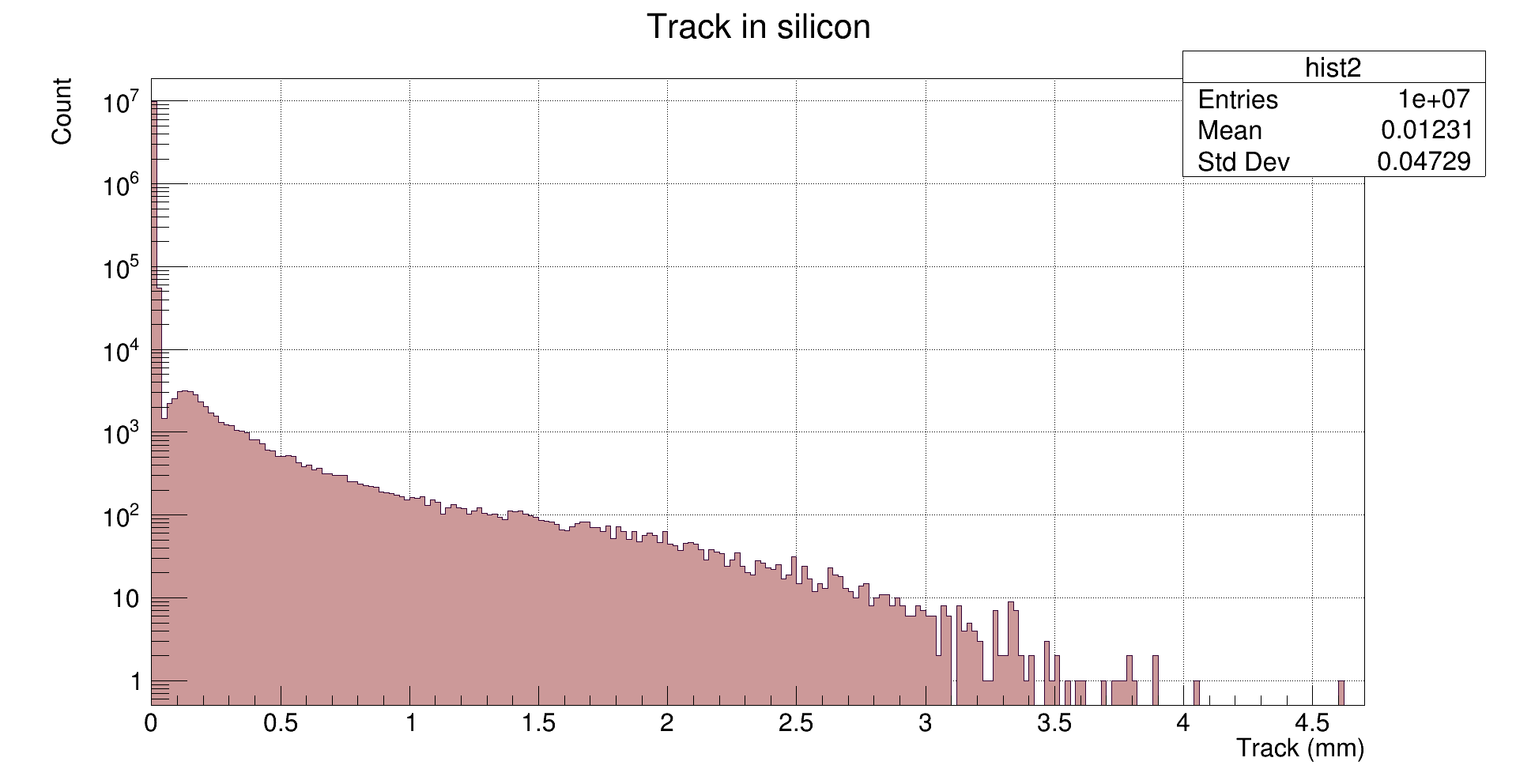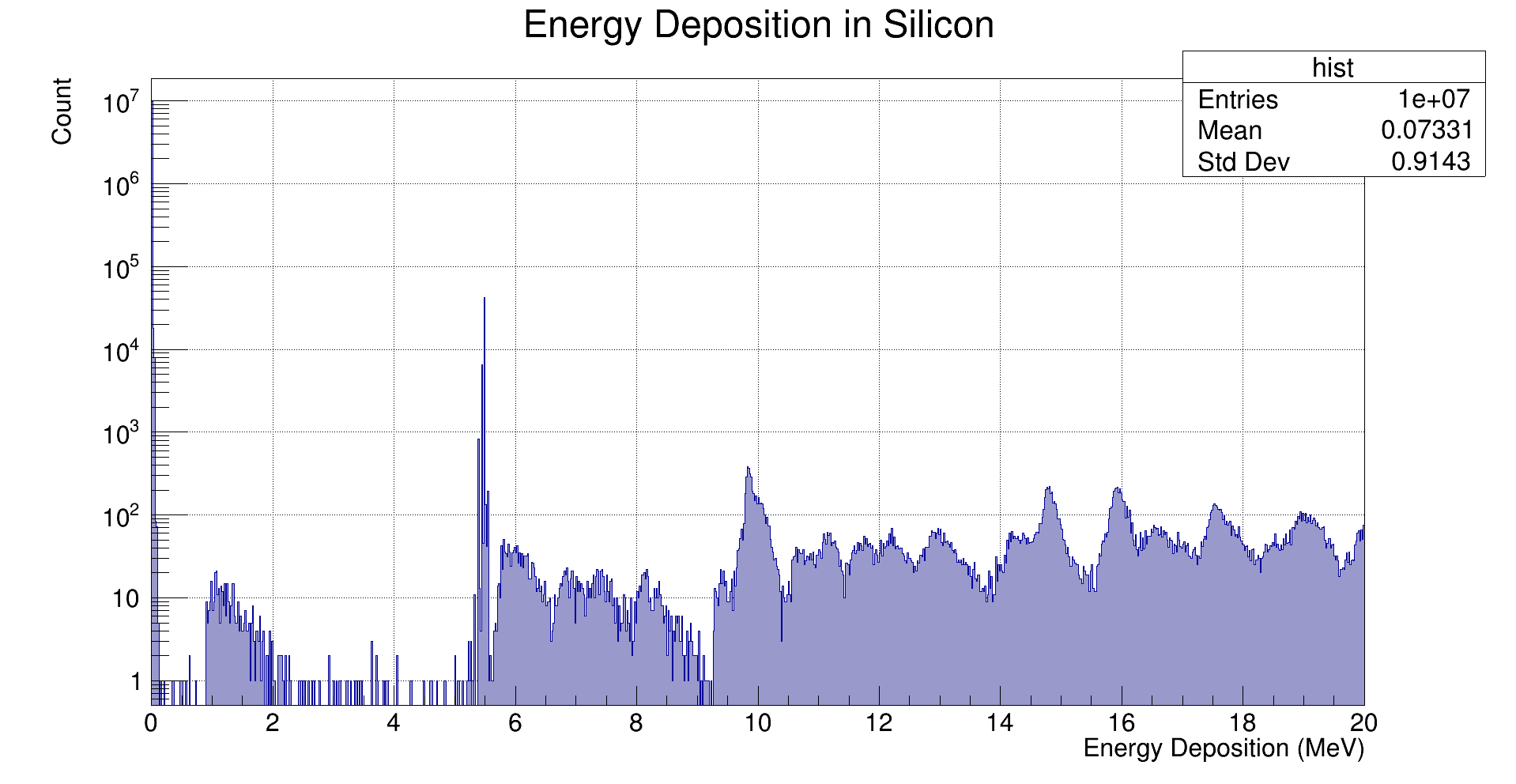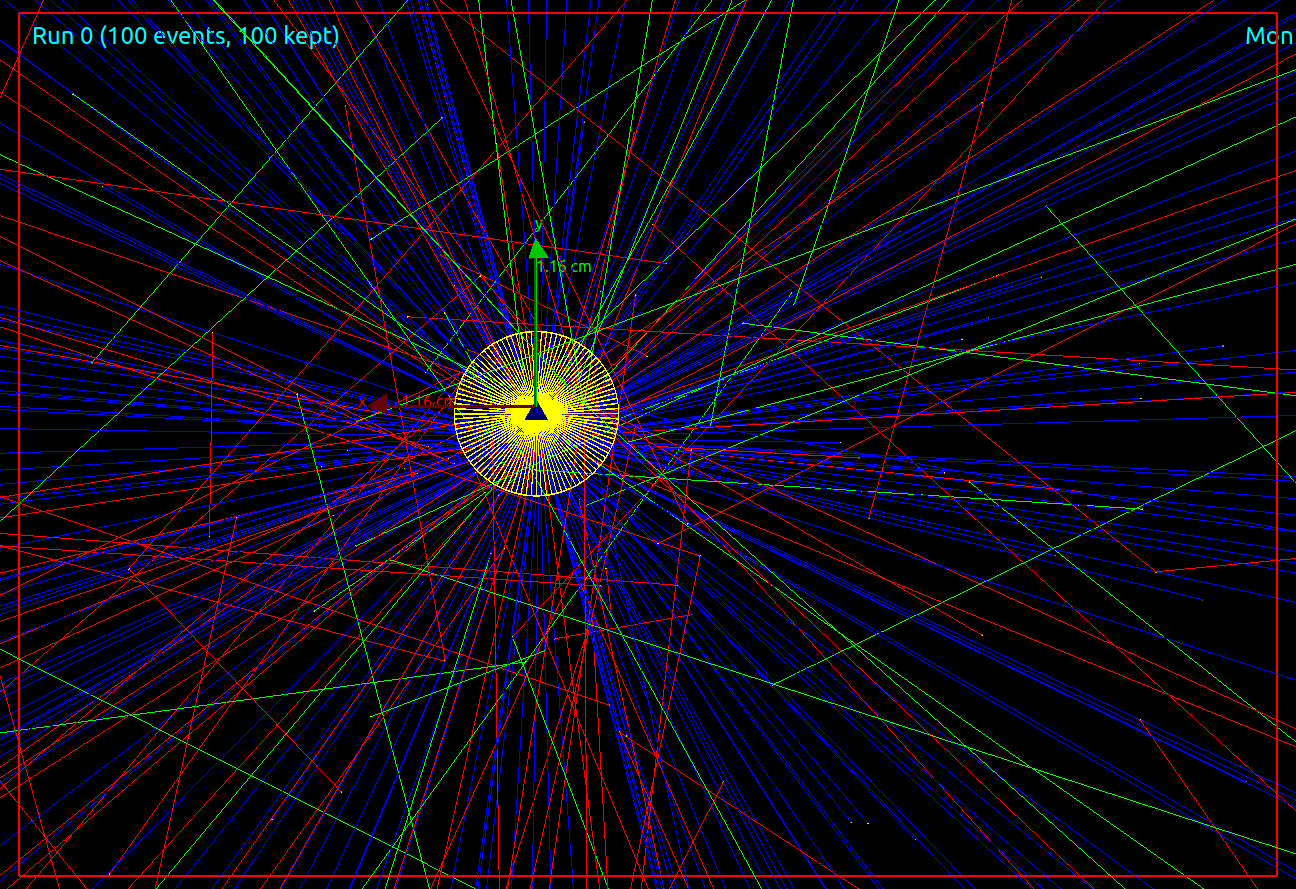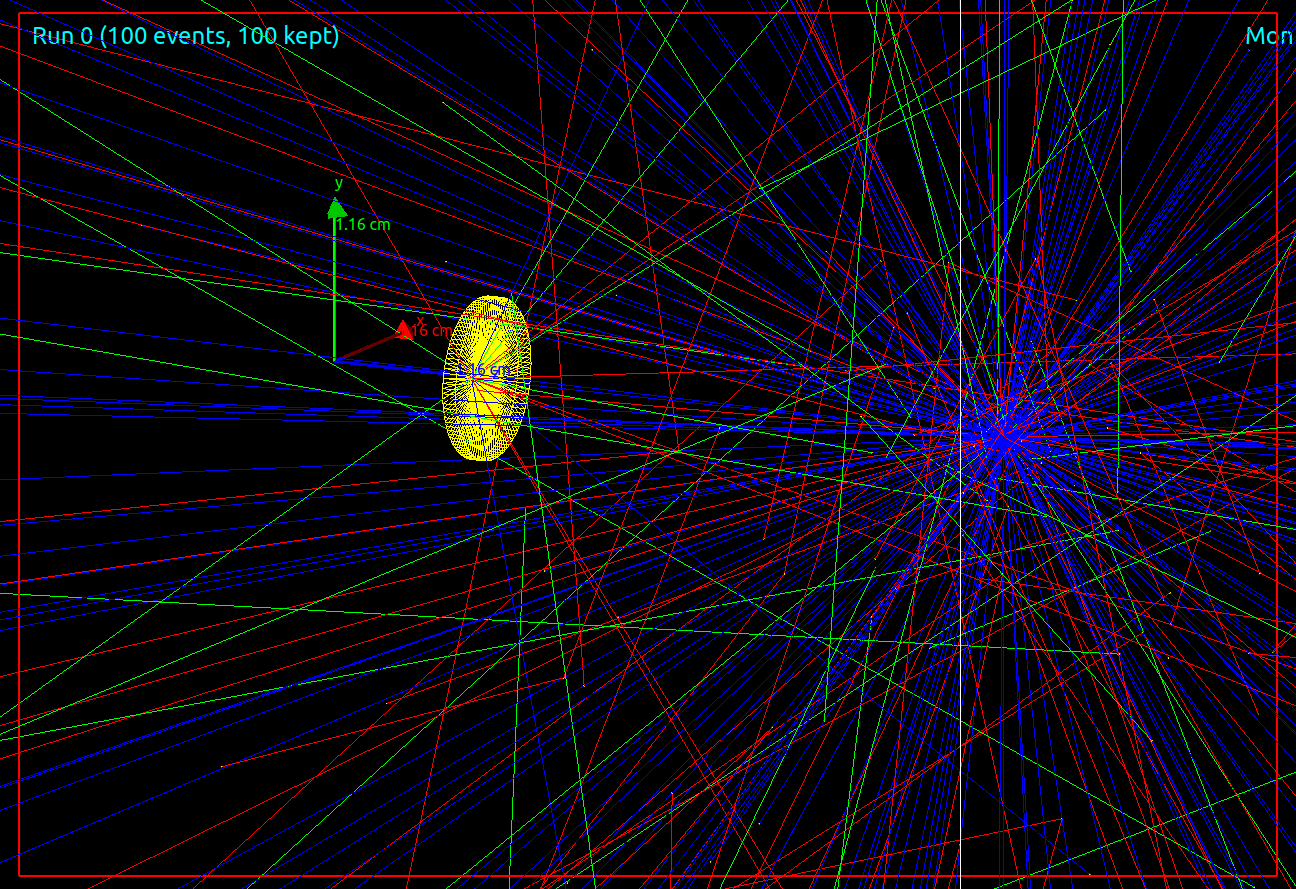Hi,
I am new to GEANT4 and I was simulating a simple silicon detector to detect alpha particles from americium 241 source. The thickness of the detector is 1mm and radius 5.64 mm. I have made this code by editing the G4 example B4. I added the Am-241 source using GPS as a macro and when I run the code, I am getting track information upto 4mm. But my detector thickness is only 1mm. The energy deposited also follow the same trend. Energies upto 24 MeV is being recorded which can never happen in case of 1 mm thick Silicon detector. I am adding my stepping action, run action, detector construction and event action scripts here along with pictures of the output I get
B4RunAction.cc (3.8 KB)
B4aSteppingAction.cc (1.5 KB)
B4aEventAction.cc (2.7 KB)
B4DetectorConstruction.cc (5.8 KB)
Hi,
The track lengths go up to 4.5mm and the radius of your silicon wafer is 5.642mm, so this is not inconsistent with what is possible. Energy deposited is a bit more of a puzzle. But without knowing what your primary source particle characteristics are from gps, it is hard to say more. Are you using an Am241/Be source spectrum or just pure Am241? Are you emitting a monoenergetic or a spectrum of neutrons? of alphas? If so, what energy, direction and position with respect to the detector?
Could you please post the macro you are using as input.
Also, what is your physics list? Is it the default FTFP_BERT?
Hi John,
Thanks a lot for the quick reply. But if you look, the thickness of wafer is just 0.5 mm. 5.64 mm is the radius of the disk shaped detector. To get a clear picture about the geometry, I am attaching the picture of a sample run with the source. The axis of the detector and the source, both are z direction and the source emits isotropically, I have used Am241 source in gps. I am attaching that macro as well along with my physics list.
PhysListEmStandard.cc (6.8 KB)
PhysicsListMessenger.cc (5.6 KB)
PhysicsList.cc (11.9 KB)
run1.txt (400 Bytes)
(PS: I have changed the extension of my macro file from .mac to .txt while uploading as the site was not recognising file with .mac extension.). Again thanks a lot for your interest and timely help.
what about tracks that sideways through the disk? if you look at the histogram, these are few tracks anyways (compared to the 1e7 at almost 0 track length), so it is very reasonable that these are redirected within the thickness of the disk.
weller, Thanks for the response. I agree with you regarding the tracks. But how can we explain the anomaly in the energy deposition? I am not sure if there is anything responsible for around 20 MeV energy deposition coming from Am241 source
I’m just winging it here, but 241Am undergoes spontaneous fission, albeit rarely (3.6e-12 BR). I don’t have a value for the maximum released energy, but it would likely be much in excess of 20MeV. Your world is vacuum, so all the fission fragments emitted in the direction of the Si will strike it.
Ah, John…You are absolutely right on that point. I missed it. I think even in the lab while we do alpha spectroscopy we put thin mylar sheets or foils in front of the detector. Anyway I put a very thin (5-10 micrometers) aluminium foil and the high energy particles were eliminated. I was suspecting some problem with the stepping action I did while I had this problem. But thanks for helping me out.



